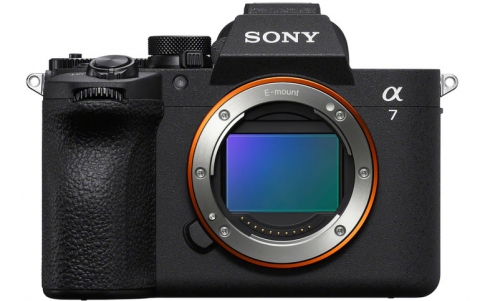
Millennium Technology Prize Goes to Blue Laser Inventor
Shuji Nakamura received on 8 September the Millennium Technology Prize at an award ceremony in Helsinki. The prize of one million euros and the 'Peak' prize trophy was presented to Professor Nakamura by Tarja Halonen, the president of Finland.
Nakamura's work has seen him develop very bright blue light-emitting diodes (LEDs), as well as green and white LEDs and, most importantly to the optical media industry, the development of the blue-laser diode.
Blue LEDs actually consist of a two-sided crystal in which the "sides" represent an n-type and a p-type semiconductor. The n-type conducts electrons, and the p-type conducts holes, which are an absence of electrons. The electrons flow in one direction, the holes flow in the opposite direction. The location in the crystal where electrons and holes fall into, or are injected into, is called the junction, and that is where the photons - particles of light - are emitted.
Nakamura discovered how to grow semiconductor crystals so that they have the structure required to create "quantum wells" for electrons at the junction. One of the key techniques for creating these wells was the addition of indium to the GaN crystal. Without the indium, GaN produces a higher frequency of ultraviolet light which is not in the visible spectrum. Adding indium results in a lowering of the frequency of the emitted photons to visible blue, but the indium also creates the required quantum well effect, so that electrons that fall into passing holes first fall into the well and gain additional mass before being injected into the holes. This adding of mass in the well creates a more vigorous injection - and therefore more light.
The creation of the blue laser came as a direct response to Nakamura adapting his blue LED technology. He discovered that he could amplify a single light frequency in a crystal by using two highly polished mirrors to make the light resonate at the required frequency.
By using mirrors on either side of the transmitting crystal and by increasing the crystal's capacity to accept strong enlectrical, he created the high-frequency blue-laser light.
Blue lasers are a substitute for the infrared lasers used in compact-disc (CD) players. Using them means that the information storage capacity of a CD is increased five times. Blue lasers mean not only more data on CDs, but also on DVDs. Next-generation high-definition DVDs employing blue lasers are about to reach the market.
When substituting a blue laser for the red one used in CD players, it was found that the information storage capacity of a CD was increased by five times. This discovery helped shape the development of next-generation of optical media where increased data rates are a premium and the blue laser, originally developed by Nakamura, has been adopted by the Blu-ray and HD DVD formats.
Professor Nakamura?s current research interests are the growing of optoelectronic materials and the fabrication of novel semiconductor devices. In more specific terms, he is working on new devices including full-colour LEDs, an efficient white-LED light bulb, laser diodes and high-power, microwave communication devices.
Blue LEDs actually consist of a two-sided crystal in which the "sides" represent an n-type and a p-type semiconductor. The n-type conducts electrons, and the p-type conducts holes, which are an absence of electrons. The electrons flow in one direction, the holes flow in the opposite direction. The location in the crystal where electrons and holes fall into, or are injected into, is called the junction, and that is where the photons - particles of light - are emitted.
Nakamura discovered how to grow semiconductor crystals so that they have the structure required to create "quantum wells" for electrons at the junction. One of the key techniques for creating these wells was the addition of indium to the GaN crystal. Without the indium, GaN produces a higher frequency of ultraviolet light which is not in the visible spectrum. Adding indium results in a lowering of the frequency of the emitted photons to visible blue, but the indium also creates the required quantum well effect, so that electrons that fall into passing holes first fall into the well and gain additional mass before being injected into the holes. This adding of mass in the well creates a more vigorous injection - and therefore more light.
The creation of the blue laser came as a direct response to Nakamura adapting his blue LED technology. He discovered that he could amplify a single light frequency in a crystal by using two highly polished mirrors to make the light resonate at the required frequency.
By using mirrors on either side of the transmitting crystal and by increasing the crystal's capacity to accept strong enlectrical, he created the high-frequency blue-laser light.
Blue lasers are a substitute for the infrared lasers used in compact-disc (CD) players. Using them means that the information storage capacity of a CD is increased five times. Blue lasers mean not only more data on CDs, but also on DVDs. Next-generation high-definition DVDs employing blue lasers are about to reach the market.
When substituting a blue laser for the red one used in CD players, it was found that the information storage capacity of a CD was increased by five times. This discovery helped shape the development of next-generation of optical media where increased data rates are a premium and the blue laser, originally developed by Nakamura, has been adopted by the Blu-ray and HD DVD formats.
Professor Nakamura?s current research interests are the growing of optoelectronic materials and the fabrication of novel semiconductor devices. In more specific terms, he is working on new devices including full-colour LEDs, an efficient white-LED light bulb, laser diodes and high-power, microwave communication devices.













